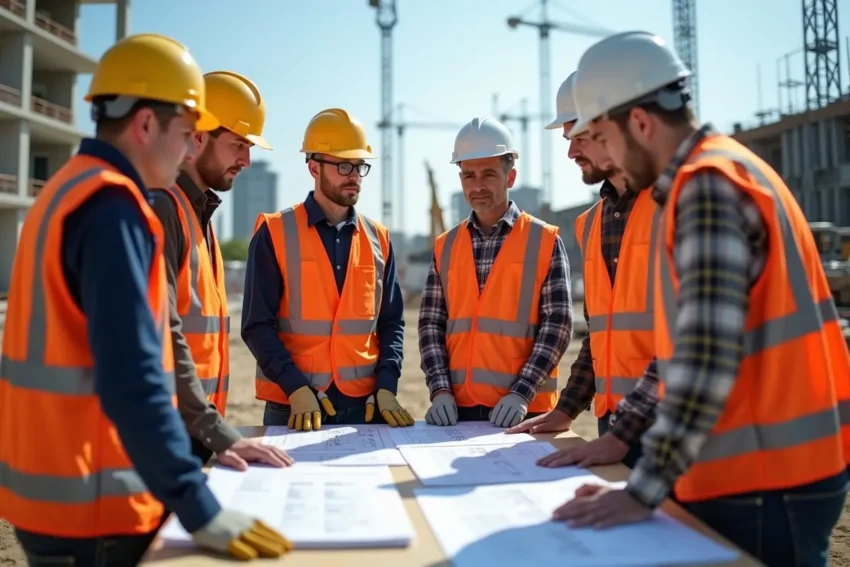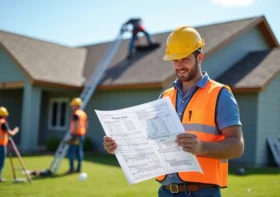What Are the Key Considerations for High-Risk Construction Jobs?

Construction sites present some of the most dangerous work environments across all industries. Workers face daily risks from heavy machinery, hazardous materials, unstable structures, and extreme heights. These dangers make construction one of the highest-risk sectors for workplace injuries and fatalities.
The most important factors for managing high-risk construction jobs include proper hazard assessment, specialized safety training, advanced protective equipment, regulatory compliance, and effective risk control measures. Project managers and safety professionals must understand these key areas to protect their teams and maintain successful operations. A systematic approach to safety helps reduce accidents while keeping projects on schedule and within budget.
Contents
Comprehensive Hazard Identification and Assessment
High-risk construction jobs require systematic hazard identification and risk assessment processes. These structured approaches help construction managers identify potential dangers before they cause injuries or accidents.
The hazard identification process starts with detailed workplace evaluations. Safety teams examine each task, equipment piece, and work environment. They document potential risks that workers might face during daily operations.
Risk assessment follows hazard identification as the next step. Teams analyze each identified hazard’s likelihood and potential severity. This analysis helps prioritize which risks need immediate attention and resources.
Construction teams must evaluate both obvious and hidden dangers. Falls, equipment failures, and chemical exposures represent common visible hazards. However, ergonomic issues and environmental factors can also create significant risks.
Regular assessment updates become necessary as projects progress. New hazards emerge when construction phases change or weather conditions shift. Teams need to adapt their safety protocols accordingly.
Documentation supports effective hazard assessment programs. Written records help track identified risks and implemented solutions. These records also assist with affordable coverage for general contractors and insurance requirements. Worker participation strengthens the assessment process. Experienced crew members often spot hazards that managers miss. Their input creates more thorough and accurate risk evaluations.
Implementation of Specialized Safety Training Programs
Companies must conduct thorough needs assessments before creating any safety training program. This process identifies specific risks and skill gaps that exist on construction sites.
Organizations should develop hands-on training modules that address real workplace hazards. Workers learn better through practical exercises rather than classroom lectures alone.
Safety training programs require clear objectives and measurable outcomes. Each session should focus on specific skills that workers need for their daily tasks.
Construction companies benefit from multi-faceted approaches that combine workshops, safety drills, and online platforms. This variety helps different types of learners absorb the material effectively.
Regular evaluation of training effectiveness helps companies improve their programs over time. However, many organizations fail to track accident rates before and after training sessions.
Companies must customize training content for different job roles on construction sites. A crane operator needs different safety knowledge than a welder or concrete worker.
Safety instructors should use real case studies and examples from the construction industry. Workers relate better to scenarios they might actually face on their job sites.
Use of Advanced Personal Protective Equipment (PPE)
High-risk construction sites require more than basic safety gear. Advanced PPE technologies provide superior protection against multiple hazards that workers face daily.
Hard hats with built-in sensors can detect impacts and falls. These smart helmets alert supervisors to accidents in real-time. Some models include communication systems and heads-up displays.
High-visibility clothing now features reflective materials that work better in low light. Advanced fabrics resist cuts, chemicals, and extreme temperatures. These materials also allow better air flow to keep workers comfortable.
Respiratory protection has improved with powered air systems. These units filter contaminated air automatically. They work better than traditional masks in dusty environments.
Safety harnesses use lighter but stronger materials. Modern designs distribute weight more evenly across the body. Quick-connect buckles make them faster to put on and take off.
Employers must assess workplace hazards before choosing PPE. The equipment must fit properly to work effectively. Poor-fitting gear can leave workers exposed to danger.
Regular maintenance keeps advanced PPE working correctly. Workers need proper training on new technologies. Therefore, companies should invest in both equipment and education.
Strict Compliance with Regulatory Safety Standards
High-risk construction projects must follow all safety regulations without exception. These rules protect workers and prevent serious accidents that can shut down entire job sites.
Construction companies face multiple regulatory requirements. Safety standards cover everything from personal protective equipment to equipment operation procedures. Environmental regulations also apply to many projects.
According to Sean O’Keefe, contractors often face operational setbacks because their incident response systems are poorly structured and lack strong leadership oversight, and that’s why documentation plays a major role in compliance efforts. Workers must record all safety procedures, incident reports, and equipment inspections. These records prove that companies follow the required standards.
Regular safety training keeps workers updated on current regulations. New rules appear frequently, and teams must stay informed about changes. Training sessions should cover both federal and local requirements.
Non-compliance leads to serious consequences. Fines can reach thousands of dollars per violation. Projects may face delays or complete shutdowns until companies fix safety problems.
Application of Effective Risk Mitization Strategies
Construction companies must put risk reduction plans into action before work starts. This proactive approach helps prevent accidents and saves money in the long run.
Risk avoidance removes dangerous activities completely. For example, crews might choose safer equipment over risky alternatives. However, this strategy cannot eliminate all hazards in construction work.
Risk reduction lowers the chance of problems without removing them entirely. Workers use safety gear, follow procedures, and receive proper training. Therefore, companies see fewer injuries and delays.
Risk transfer moves responsibility to other parties through insurance or contracts. Subcontractors often take on specific risks they handle better. As a result, the main contractor faces less exposure.
Risk acceptance means companies knowingly take on certain dangers. They prepare backup plans and set aside money for potential losses. This approach works for risks that cost too much to avoid.
Regular review keeps strategies fresh and effective. Project managers check plans weekly and adjust them as needed. New hazards appear during construction, so teams must stay alert and ready to respond.
Conclusion
High-risk construction jobs require careful attention to multiple safety factors. Workers and managers must focus on proper protective equipment, thorough training, and hazard identification to prevent accidents.
Success depends on clear communication between all team members. Regular safety meetings and equipment inspections help reduce dangerous situations on job sites.
Companies that prioritize worker safety see fewer injuries and delays. However, this requires consistent effort from supervisors, workers, and project managers to maintain safe work practices every day.



